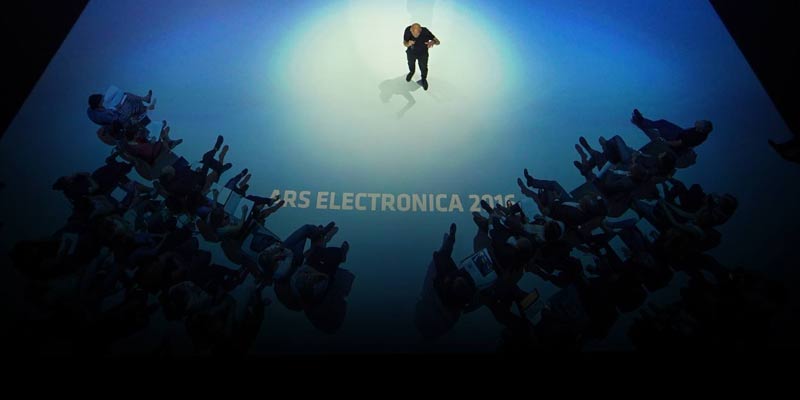European Digital Art and Science Network:
Quadrature is the Recipient of a Multi-week Residency at the ESO
Press release “European Digital Art and Science Network: Quadrature is the Recipient of a Multi-week Residency at the ESO” / PDF
Ars Electronica Blog: Interview with Quadrature
European Digital Art and Science Network: Quadrature
(Linz / Santiago de Chile, March 15, 2016) The members of the Quadrature artists’ collective, Jan Bernstein, Juliane Götz and Sebastian Neitsch (all DE), are the recipients of this year’s European Digital Art and Science Network residency. Following their successful application in response to the network’s open call, the three artists will soon be traveling to Chile to spend several weeks at the European Southern Observatory (ESO). The second stop on their itinerary is Linz, where the Ars Electronica Futurelab’s staff will provide them with support as they go about developing the project that emerges from their stay in Chile. This work will premiere at the Ars Electronica Festival in early September. The Quadrature artists’ collective was founded in 2012. All three members live and work in Berlin. The focus of their artistic endeavors is on the interface of the physical and digital worlds, a domain populated by objects and code.
Quadrature: Jan Bernstein, Juliane Götz and Sebastian Neitsch
Jan Bernstein, Juliane Götz and Sebastian Neitsch met at Burg Giebichenstein University of Art and Design in Halle, Germany. After completing their education, the artists worked individually in, among other cities, Antwerp, Linz, Valencia, Vienna and Stuttgart. They collaborated for the first time in 2009, and went on to establish Quadrature, a collective in which each member inputs his/her own specific skills and focal-point themes. Most of their artistic projects focus on the contradiction between knowledge and comprehension.
Outer space is by no means terra incognita for Quadrature; far from it, actually. Several of the collective’s previous works deal with methods we human beings employ to explore the cosmos. One example is a project entitled “Voyager,” in which the artists employ slowly moving metal cursors to indicate the current flight paths and velocities of NASA’s Voyager 1 & 2 space probes. Another example is “Satelliten,” a work that earned Quadrature an Honorary Mention in the 2015 Prix Ars Electronica’s Interactive Art category. “Satelliten” is a machine that graphically documents the movements and positions of satellites. Serving as the “canvases” for these drawings are out-of-date maps among the pages of a bound atlas.
The European Digital Art and Science Network
Together with the European Southern Observatory and seven renowned artistic and cultural institutions, Ars Electronica launched the European Digital Art and Science Network in late 2014. This Europe-wide initiative gives artists the opportunity to spend a stay of several weeks duration at the ESO followed up by a sojourn at the Ars Electronica Futurelab. The recipient of this residency is determined by a competition open to the general public. The recipient’s artistic output is showcased in an exhibition that runs at the Ars Electronica Festival and then at the facilities of all network members.
In addition to Ars Electronica in Linz, Austria, the network’s member institutions are Serbia’s Center for the Promotion of Science, DIG Gallery in Slovakia, two Spanish facilities—the Zaragoza City of Knowledge Foundation and LABoral—Kapelica Gallery in Slovenia, GV Art in England and the Science Gallery in Ireland. The European Southern Observatory is the host scientific research institution. The European Digital Art and Science Network receives half of its funding from the European Union, and half is provided by the participating institutions.
This project has been funded with support from the European Commission. This publication (communication) reflects the views only of the author, and the Commission cannot be held responsible for any use which may be made of the information contained therein.
http://www.flickr.com/photos/arselectronica/25787720315/
Quadrature / Photocredit: Quadrature / Printversion
http://www.flickr.com/photos/arselectronica/25786545025/
Satelliten / Photocredit: Quadrature / Printversion
http://www.flickr.com/photos/arselectronica/25786478055/
VLT in Chile / Photocredit: ESO/Y. Beletsky / Printversion

